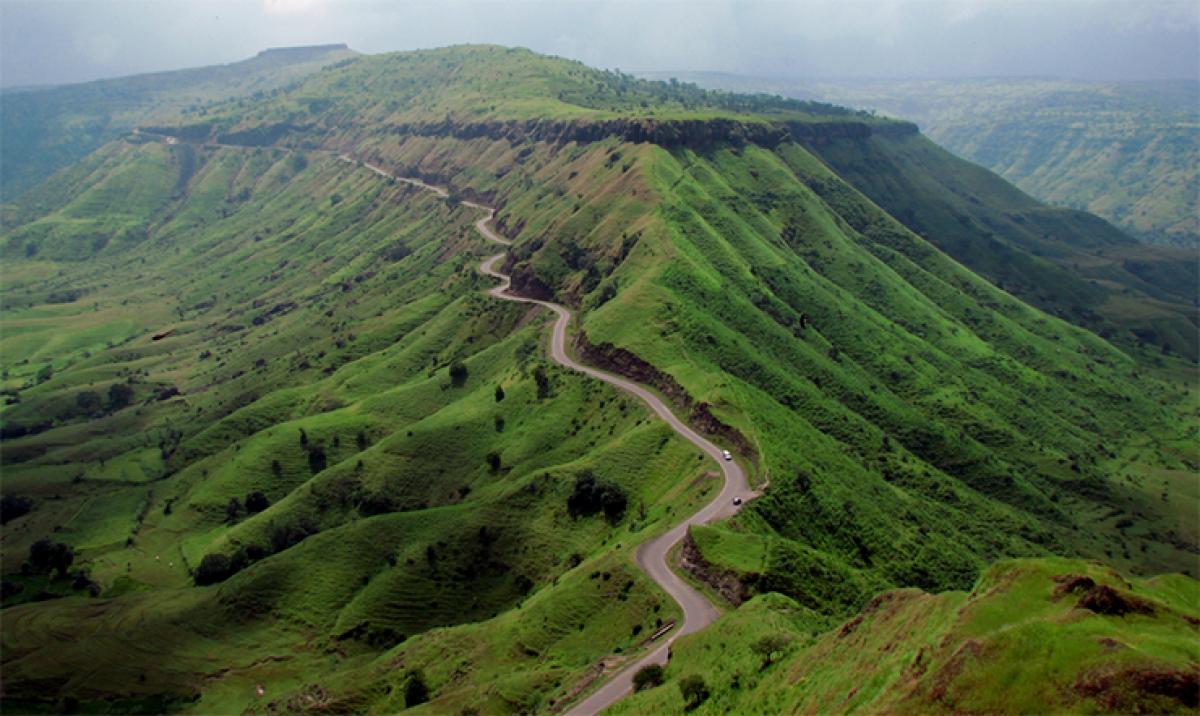Live
- Sri Aurobindo’s vision: Bridging the gap for holistic human evolution
- Sri Radha Govinda Ratha Yatra conducted
- A feast of music, dance and drama
- Mohan Babu denies absconding amid legal controversy
- Swift City to boost industrial growth in Bengaluru
- Allu Arjun walks out free after spending night in jail
- Congress harbours no grudge against any actor: TPCC chief
- Allu Arjun meets Upendra after release from prison, wishes for his ‘UI’ film
- Government Launches Uniform Diet Plan to Boost Student Health and Education
- Robust Security Arrangements for TSPSC Group-2 Exams in Jogulamba Gadwal
Just In

The Eastern Ghats are a discontinuous range of mountains along India\'s eastern coast. The Eastern Ghats run from West Bengal state in the north, through Odisha and Andhra Pradesh to Tamil Nadu in the south passing some parts of Karnataka. They are eroded and cut through by the four major rivers of peninsular India, known as the Godavari, Mahanadi, Krishna, and Kaveri.
The Eastern Ghats are a discontinuous range of mountains along India's eastern coast. The Eastern Ghats run from West Bengal state in the north, through Odisha and Andhra Pradesh to Tamil Nadu in the south passing some parts of Karnataka. They are eroded and cut through by the four major rivers of peninsular India, known as the Godavari, Mahanadi, Krishna, and Kaveri.
The mountain ranges run parallel to the Bay of Bengal. The Deccan Plateau lies to the west of the range, between the Eastern Ghats and Western Ghats. The coastal plains, including the Coromandel Coast region, lie between the Eastern Ghats and the Bay of Bengal.
The Eastern Ghats are older than the Western Ghats, and have a complex geological history related to the assembly and breakup of the ancient supercontinent of Rodinia and the assembly of the Gondwana supercontinent. The Eastern Ghats are made up of charnockites, granite gneiss, khondalites, metamorphic gneisses and quartzite rock formations.
The structure of the Eastern Ghats includes thrusts and strike-slip faults all along its range. Limestone, bauxite and iron ore are also found in the Eastern Ghats hill ranges.
Rivers:
Eastern Ghats are the source points for many small and medium rivers along the east coastal plains of South India.
Rivers flowing through Eastern Ghats
- Godavari
- Krishna
- Tungabhadra
- Mahanadi
- Kaveri
Rivers originating on the Eastern Ghats Bahuda River , Rushikulya River , Vamsadhara River , Nagavali River , Champavathi River , Vegavathi River , Gosthani River , Sarada River , Varaha River , Tandava River , Indravathi River, Sabari River , Sileru River , Tammileru , Gundlakamma River , Penner River , Swarnamukhi , Kundu River , Papaghni River and Chitravati River
Eco Regions
The Eastern Ghats consists of different eco regions along its range from south to north along the East Coast of India. The important eco regions consist of Eastern Highlands moist deciduous forests, East Deccan dry evergreen forests, Deccan thorn scrub forests, Shrub lands and South Deccan Plateau dry deciduous forests.
Flora
The southern tropical thorn scrub type forests consist of open, low vegetation that is characterised by thorny trees with short trunks and low, branching crowns that rarely meet to form a closed canopy.
Fauna
The endemic fauna of the Eastern Ghats are Jerdon's courser (Rhinoptilus bitorquatus) and grey slender loris (Loris lydekkerianus). The rare geckos found here are Indian golden gecko (Calodactylodes aureus), rock gecko (Hemiphyllodactylus aurantiacus), and Sharma's skink Eutropis nagarjuni.

© 2024 Hyderabad Media House Limited/The Hans India. All rights reserved. Powered by hocalwire.com







